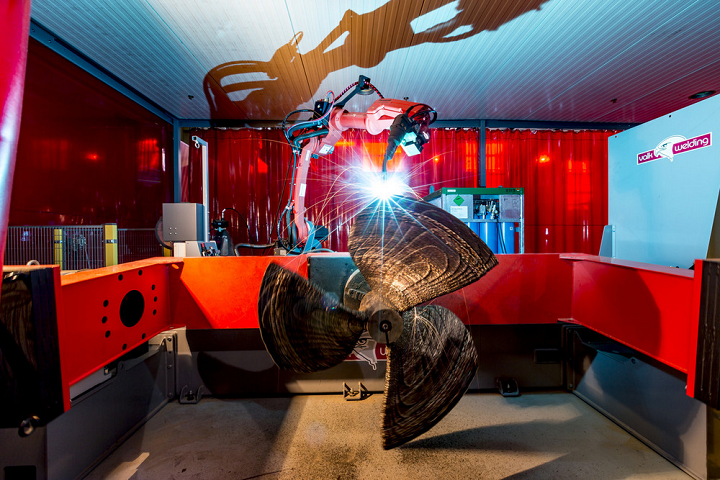In an article entitled “Is it Time for the Maritime Industry to Embrace 3D Printed Spare Parts?” a pair of authors argues that the shipping industry could benefit from 3D printing spare parts. The shipping industry, the authors point out, is typically conservative when it comes to change, but they offer several reasons why this industry, in particular, could be well-served by embracing 3D printing. Ships are frequently operating far from repair facilities and spare parts storage, so the ability to produce spare parts directly aboard the ships could be immensely helpful.
The authors also examine several other industries in which 3D printing has been successfully utilized in the production of spare parts, including the aerospace industry. The advantages that the aerospace industry has seen include better energy efficiency, cutbacks in emissions, better design handling and lower manufacturing lead time. Reduction in inventory cost is another benefit, as manufacturers can produce spare parts when and where they are needed rather than keeping a warehouse full of parts that may or may not be used.
The maritime industry isn’t a complete stranger to 3D printing, and the authors highlight a few cases in which the technology has already been successfully used. They mention a 2016 project called “3D Printing Marine Spares,” which was initiated by the Innovation Quarter, the Port of Rotterdam Authority and RDM Makerspace with the participation of 28 businesses and agencies.
“Making use of three different production processes, the advantages of the various methods for additive manufacturing and the maturity of the technology was experienced,” the authors state. “Thus the project brought a wealth of information on the current and near future state of 3D printing as an alternative method for producing maritime parts.”
The project concluded that 3D printing holds promise for a variety of spare parts. However, extra work needs to be done to adjust regulations in order to qualify 3D printed parts. The authors also mention the WAAMpeller project, in which several organizations worked together to fabricate the world’s first class-approved 3D printed ship’s propeller. Then there is the Green Ship of the Future consortium, which involves more than 20 industry partners exploring opportunities for 3D printing in the maritime industry.
The United States Navy has also used 3D printing to great success in a number of maintenance cases.
“The maintenance has given the Navy the time needed to permanently install, and test out a 3D printer on board,” the researchers state. In the meantime, the crewmembers on board the ship have been busy printing out anything from plastic syringes, to oil tank caps, to model planes used for the mock‐up of the flight deck. The US Navy argues that they are still several years away from being able to print out actual spare parts for aircraft or the ship itself, but it is certainly a good starting point.”
The authors conducted several interviews with people working in the maritime industry. Most of the respondents had some idea of what 3D printing is, and almost all of them had a positive view of the technology; a few were skeptical, but not negative.
“Their main concern was if the spare part made by the AM is comparable with the part made by the traditional method,” the researchers explain. “Another concern was the cost of the AM machine, and the cost to build the part.”
There are several issues to be addressed, they continue, including finding the best process for use aboard a ship, protecting intellectual property, and training personnel in the technology. Overall, however, they conclude that 3D printing is a “promising” technology and one that should be seriously considered by the maritime industry.
Authors of the paper include E. Kostidi and N. Nikitakos.
Discuss this and other 3D printing topics at 3DPrintBoard.com or share your thoughts below.
Subscribe to Our Email Newsletter
Stay up-to-date on all the latest news from the 3D printing industry and receive information and offers from third party vendors.
Print Services
Upload your 3D Models and get them printed quickly and efficiently.
You May Also Like
Johns Hopkins University Researchers Develop HyFAM Technology
Two scientists from Johns Hopkins University, Nathan C. Brown and Jochen Mueller, have developed a hybrid manufacturing technology they call HyFam, or Hybrid Formative Additive Manufacturing. Their work on this technology...
3D Printing G-Code Gets an Upgrade: T-Code
Good old G-Code still manages many 3D printers, great and small. Just like the STL, it’s a standard that enables collaboration while also holding the additive manufacturing (AM) industry back....
AM Rewind: The Biggest News and Trends of 2024
After a sluggish 2023, driven by persistent inflation and geopolitical tensions, 2024 has seen some recovery. Economic growth climbed from about 2.8 percent in 2023 to a modest 3.2 percent...
Metal Wire 3D Printer OEM ValCUN Announces Plans for 2025 Expansion
ValCUN, a Belgian original equipment manufacturer (OEM) of wire-based metal additive manufacturing (AM) hardware, has announced that the company has entered the next phase of its growth trajectory, making key...




































